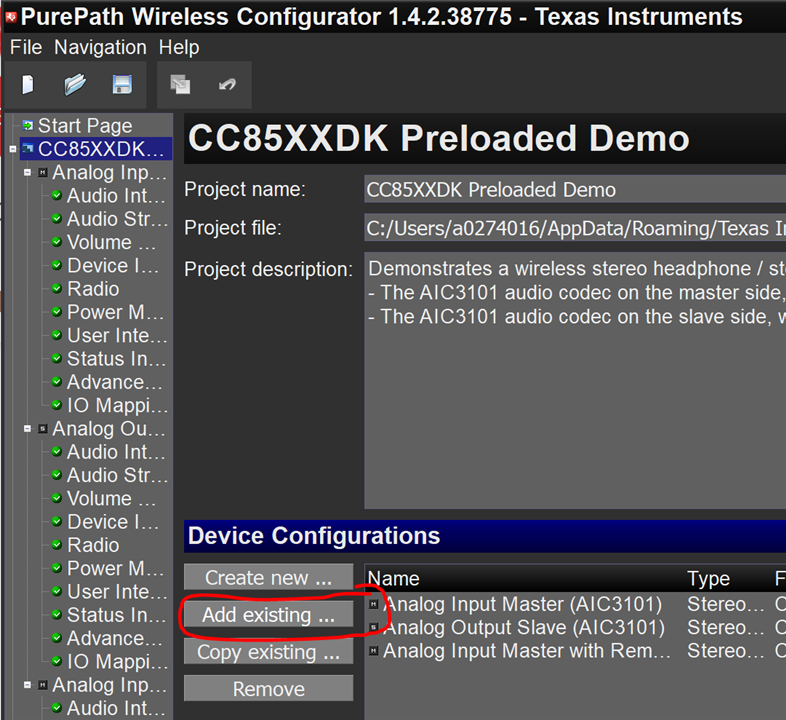Other Parts Discussed in Thread: TAS2562
I’m looking to use the cc8530 with two digital amplifiers. Looking through the documentation and pure path configuration software I can’t see how to control multiple devices on the I2c bus with the cc8530. The amplifiers have the option to set different I2c addresses, but the cc8530 doesn’t show how to address multiple devices. I considered just setting the two amplifiers to the same item to the address and controlling them in unison, but I know this is not the “correct“ way to do this and it has the potential to lock up the bus. All that aside, the amplifiers will always function together, output the same audio at the same volume. Is there a way to control multiple amps using the CC8530 or do you believe this method would be functional?
I know some people will say just use a 2 channel amp, but I need a low power (3 W per channel) high quality amp with minimal quiescent current that functions of a 3.3V supply. I have struggled to find a two channel amp meeting these requirements. I will have to write a driver for it to function with the cc8530 either way, as none of the pre-specified amps function on less than 3.3 V, so drivers are not a concern.
Thank you,
Austin



